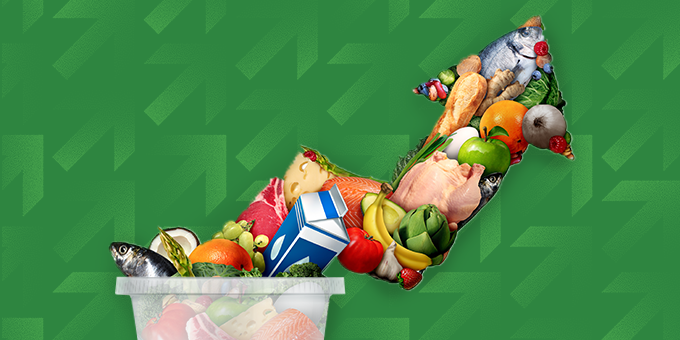
Regardless of industry, the rise in inflation is hitting businesses hard. Commercial food producers are seeing higher costs for food ingredients and consumer budgets tightening at the grocery store. In addition, price increases, higher labor costs, and other global factors drove up the cost of PET and other plastics in 2022. This continued to put pressure on commercial food processors using plastic packaging, further cutting their bottom line.
As we head into the second half of 2023, we take a look at how inflation has impacted cost and if there is any inflation relief in sight for food packaging supplies.
How We Got Here
Due to increases in consumer prices, inflation at the end of 2022 was at 6.5%. It lowered to 5% this winter, where the Federal Reserve Bank of New York predicts it will stay for the remainder of the year.
How does this impact plastic containers for food?
Last year, the banking cooperative Rabobank released a report on the cost of packaging and found, “In the area of plastic packaging, over the last two years, there have been once-in-a-lifetime price increases as a result of weather events, infrastructure breakdown, COVID-19, and labor shortages.”
Volatility in energy markets means uncertainty for plastic materials, the report also found, although domestic production of plastic packaging is expected to provide price relief in 2023. This means finding competitively priced packaging options and designs is more critical than ever.
Inflation and Food Packaging Supplies
In addition to food packaging costs, overall food costs are up, both for ingredients food producers use and the prices they charge for their products. This is being felt everywhere, especially with consumers, making food price inflation one of the top headlines over the past year.
According to the International Dairy, Deli, and Bakery Association (IDDBA), inflation in April began to ease slightly, though still considerably high. The cost of food and beverages increased year-over-year by 8.2% in April, down from the 11.4% increase observed in the first quarter of 2023.
The IDDBA also found the cost of dairy food products increased by 17.6% over the past year, deli items went up by 7.8%, and bakery items increased by 12%. The number of units sold was down across all three categories, as well.
IDDBA noted in the April 2023 IDDBA newsletter that people may be buying less of these products, in part, because they’re being more conscious about the food they use at home. According to the newsletter, “40% of consumers noted they are more conscious of using up fresh foods before they go bad, 39% are using leftovers more, and 25% are using more simple ingredients.”
Inflation in Plastic Containers for Food
According to the Federal Reserve, the cost of plastic and resin is still high, but below the record high we saw in June 2022.
The cost of plastics depends on whether you want virgin PET plastic or post-consumer plastic (PCR) and what form you are buying–sheet, flake, or pellets. PCR pellets, which are completely ready for extrusion, cost about 30% more than virgin plastic whereas flake, which is less processed, is less expensive than virgin PET.
We have found here at Lacerta that some companies are examining their food packaging supplies in light of this cost increase and have opted for smaller packaging or different designs. They also see this as an opportunity to change from PET virgin plastic to PCR recycled plastic, a more sustainable option and in the case mentioned above, less expensive.
In all, the cost of plastics and the move toward sustainability has nearly every commercial food producer looking to reduce plastic use.
What Food Producers Can Do
If you are in the commercial food processing business, the first step toward reducing costs is to examine the cost competitiveness of your vendor. Changing vendors, which requires internal discussions and often a review process, can lead to long-term food packaging supply cost reductions.
Next, consider the size and design of your plastic containers for food and whether to make a change to manage food and packaging costs. Different shapes and designs can help your company reduce costs without noticeably changing the amount of food the packaging holds.
Making any changes can seem intimidating, but by working with a true partner vendor with a professional design and service team to usher you through the process, you can make cost-reduction changes easier.
To learn more about our affordable packaging solutions, talk to one of our experts.





